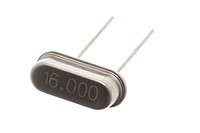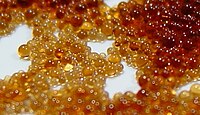
Identification and Regulation of Active Sites on Nanodiamonds: Establishing a Highly Efficient Catalytic System for Oxidation of Organic Contaminants
Sign Up to like & getrecommendations! Published in 2018 at "Advanced Functional Materials"
DOI: 10.1002/adfm.201705295
Abstract: Nanodiamonds exhibit great potential as green catalysts for remediation of organic contaminants. However, the specific active site and corresponding oxidative mechanism are unclear, which retard further developments of high-performance catalysts. Here, an annealing strategy is… read more here.
Keywords: active sites; ketonic carbonyl; system; oxidation ... See more keywords

A rapid experimental protocol to determine the desorption resistant fraction of sediment-sorbed hydrophobic organic contaminants
Sign Up to like & getrecommendations! Published in 2019 at "Environmental Science and Pollution Research"
DOI: 10.1007/s11356-019-06521-z
Abstract: Desorption of hydrophobic organic contaminants (HOCs) from sedimentary materials plays a vital role in dictating the fate and transport of HOCs in the environment. Desorption irreversibility is a commonly observed phenomenon in laboratory sorption/desorption studies… read more here.
Keywords: sediment; protocol; organic contaminants; hydrophobic organic ... See more keywords

Assessing the potential for trace organic contaminants commonly found in Australian rivers to induce vitellogenin in the native rainbowfish (Melanotaenia fluviatilis) and the introduced mosquitofish (Gambusia holbrooki).
Sign Up to like & getrecommendations! Published in 2017 at "Aquatic toxicology"
DOI: 10.1016/j.aquatox.2017.02.008
Abstract: In Australia, trace organic contaminants (TrOCs) and endocrine active compounds (EACs) have been detected in rivers impacted by sewage effluent, urban stormwater, agricultural and industrial inputs. It is unclear whether these chemicals are at concentrations… read more here.
Keywords: native rainbowfish; trace organic; rainbowfish melanotaenia; fluviatilis introduced ... See more keywords

Activation of peroxymonosulfate by microwave irradiation for degradation of organic contaminants
Sign Up to like & getrecommendations! Published in 2017 at "Chemical Engineering Journal"
DOI: 10.1016/j.cej.2017.01.012
Abstract: Abstract In this study, peroxymonosulfate (PMS) activation was successfully achieved by microwave (MW) irradiation directly and subsequently applied for the degradation of bisphenol A (BPA, an endocrine disrupting chemical frequently detected in the environment), especially… read more here.
Keywords: degradation; peroxymonosulfate; microwave irradiation; organic contaminants ... See more keywords

Removal of emerging organic contaminants with a pilot-scale biofilter packed with natural manganese oxides
Sign Up to like & getrecommendations! Published in 2017 at "Chemical Engineering Journal"
DOI: 10.1016/j.cej.2017.02.095
Abstract: Abstract Emerging organic contaminants (EOCs), consisting of pharmaceuticals, industrial/household additives, and their transformation products, have been widely detected in surface water bodies and may lead to potential ecological risks. Installing a tertiary treatment step in… read more here.
Keywords: manganese oxides; scale biofilter; pilot scale; organic contaminants ... See more keywords

Osmotic dewatering accelerates inherent sluggish kinetics of electro-Fenton process: Toward sustainable removal of organic contaminants
Sign Up to like & getrecommendations! Published in 2020 at "Chemical Engineering Journal"
DOI: 10.1016/j.cej.2020.125043
Abstract: Abstract Refractory organic pollutants, especially at low concentrations, are very slowly degradable through a heterogeneous electro-Fenton (EF) process. This drawback, caused by limited mass transfer between in-situ produced oxidizing agents and organic molecules, negatively affects… read more here.
Keywords: electro fenton; osmotic dewatering; process; organic contaminants ... See more keywords

Time-dependent desorption of anilines, phenols, and nitrobenzenes from biochar produced at 700 °C: Insight into desorption hysteresis
Sign Up to like & getrecommendations! Published in 2021 at "Chemical Engineering Journal"
DOI: 10.1016/j.cej.2021.130584
Abstract: Abstract Biochar, once amended or released into the soil environment, may alter the transport, fate, and bioavailability of organic contaminants in the environment by adsorption and desorption. In this study, adsorption–desorption of aniline, 4-nitroaniline, phenol,… read more here.
Keywords: desorption; time; adsorption desorption; organic contaminants ... See more keywords

Effect of magnetic ion exchange (MIEX®) on removal of emerging organic contaminants.
Sign Up to like & getrecommendations! Published in 2018 at "Chemosphere"
DOI: 10.1016/j.chemosphere.2018.05.194
Abstract: In this study, the removal of nine emerging organic contaminants was investigated by using anion exchange resins. The selected compounds were carbamazepine, atrazine, simazine, estrone, bisphenol A, methylparaben, ethylparaben, propylparaben and butylparaben. Two different magnetic… read more here.
Keywords: resin; miex; effect; organic contaminants ... See more keywords

A critical review on advanced oxidation processes for the removal of trace organic contaminants: A voyage from individual to integrated processes.
Sign Up to like & getrecommendations! Published in 2020 at "Chemosphere"
DOI: 10.1016/j.chemosphere.2020.127460
Abstract: Advanced oxidation processes (AOPs), such as photolysis, photocatalysis, ozonation, Fenton process, anodic oxidation, sonolysis, and wet air oxidation, have been investigated extensively for the removal of a wide range of trace organic contaminants (TrOCs). A… read more here.
Keywords: degradation; oxidation; trace organic; oxidation processes ... See more keywords

Emerging pharmaceutical and organic contaminants removal using carbonaceous waste from oil refineries.
Sign Up to like & getrecommendations! Published in 2021 at "Chemosphere"
DOI: 10.1016/j.chemosphere.2021.129542
Abstract: The occurrence of emerging organic contaminants (EOCs) such as chemicals in personal care products, pharmaceuticals, plasticizers, etc. in surface waters is a growing global concern. The discharge of most EOCs is not regulated, and EOCs… read more here.
Keywords: contaminants removal; removal using; waste; organic contaminants ... See more keywords

Aging of microplastics increases their adsorption affinity towards organic contaminants.
Sign Up to like & getrecommendations! Published in 2022 at "Chemosphere"
DOI: 10.1016/j.chemosphere.2022.134238
Abstract: When released in the environment, microplastics undergo surface weathering due to mechanical abrasion and ultraviolet exposure. In this study, the adsorption of two model contaminants, phenanthrene and methylene blue, by weathered high density polyethylene (HDPE)… read more here.
Keywords: aging microplastics; affinity; spectroscopy; aged microplastics ... See more keywords